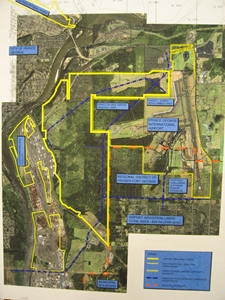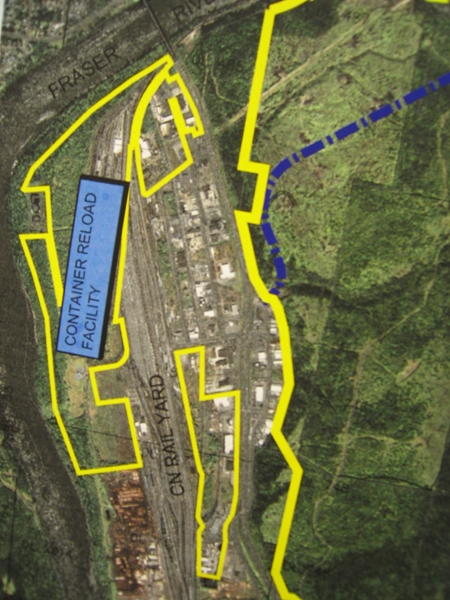Inland Container Port Site Identified
By 250 News
One piece of the puzzle seems to be in place 
CN’s inland container "reload" facility will be located in the old BCRail yards. At least that is the final location as indicated by this project overview map presented last night at the Airport Master Plan Open House.
You may not be able to read all the little blue labels without a little help, but on the left side of the picture, is the little blue label that tells the tale, so lets take a closer look :

Picture is worth .....a thousand TEU’s
This of course doesn't discount the work being done at the First Avenue site.
Previous Story - Next Story
Return to Home









PG beginning to look just like Huntsville!!
Factories and money starting to role in.